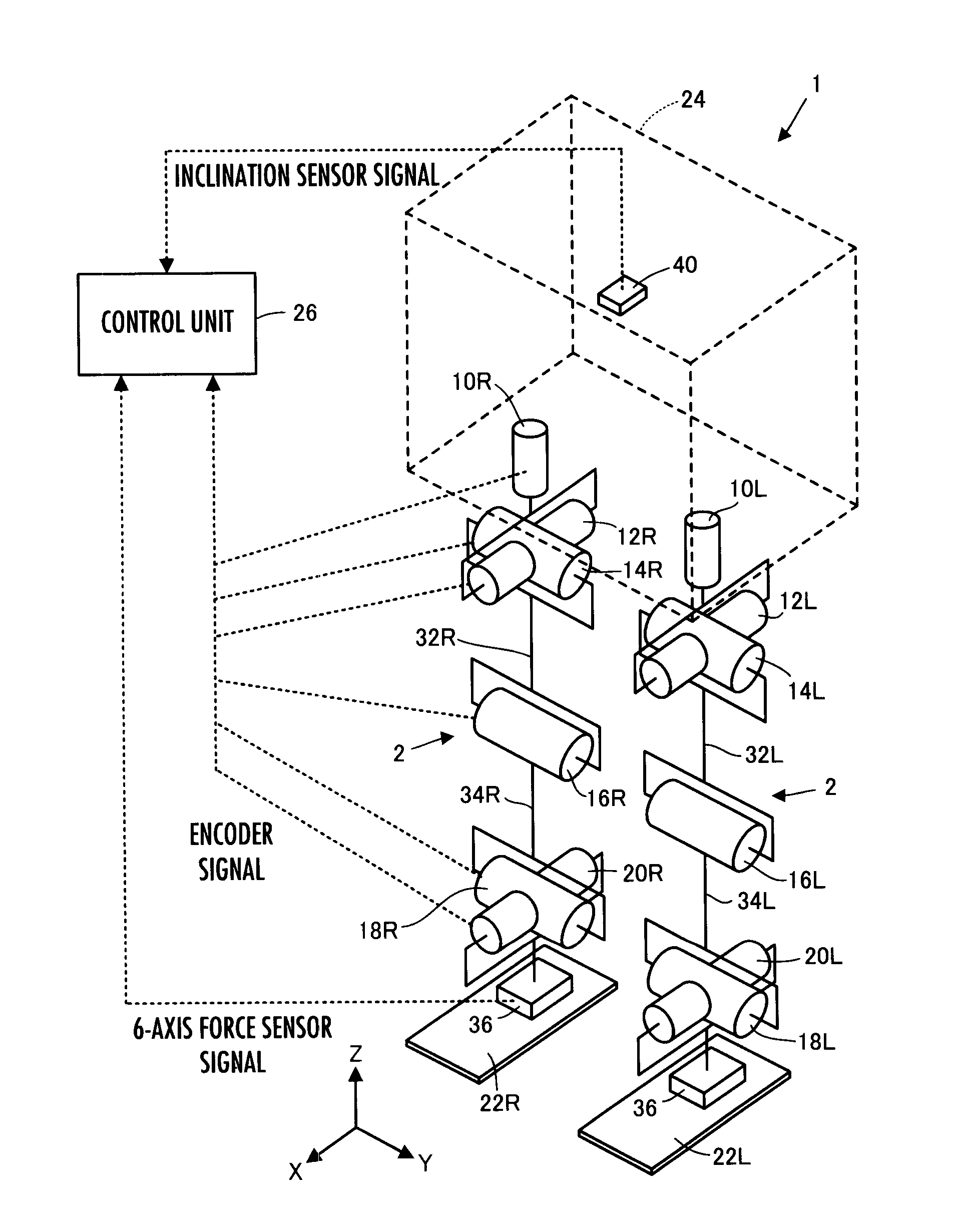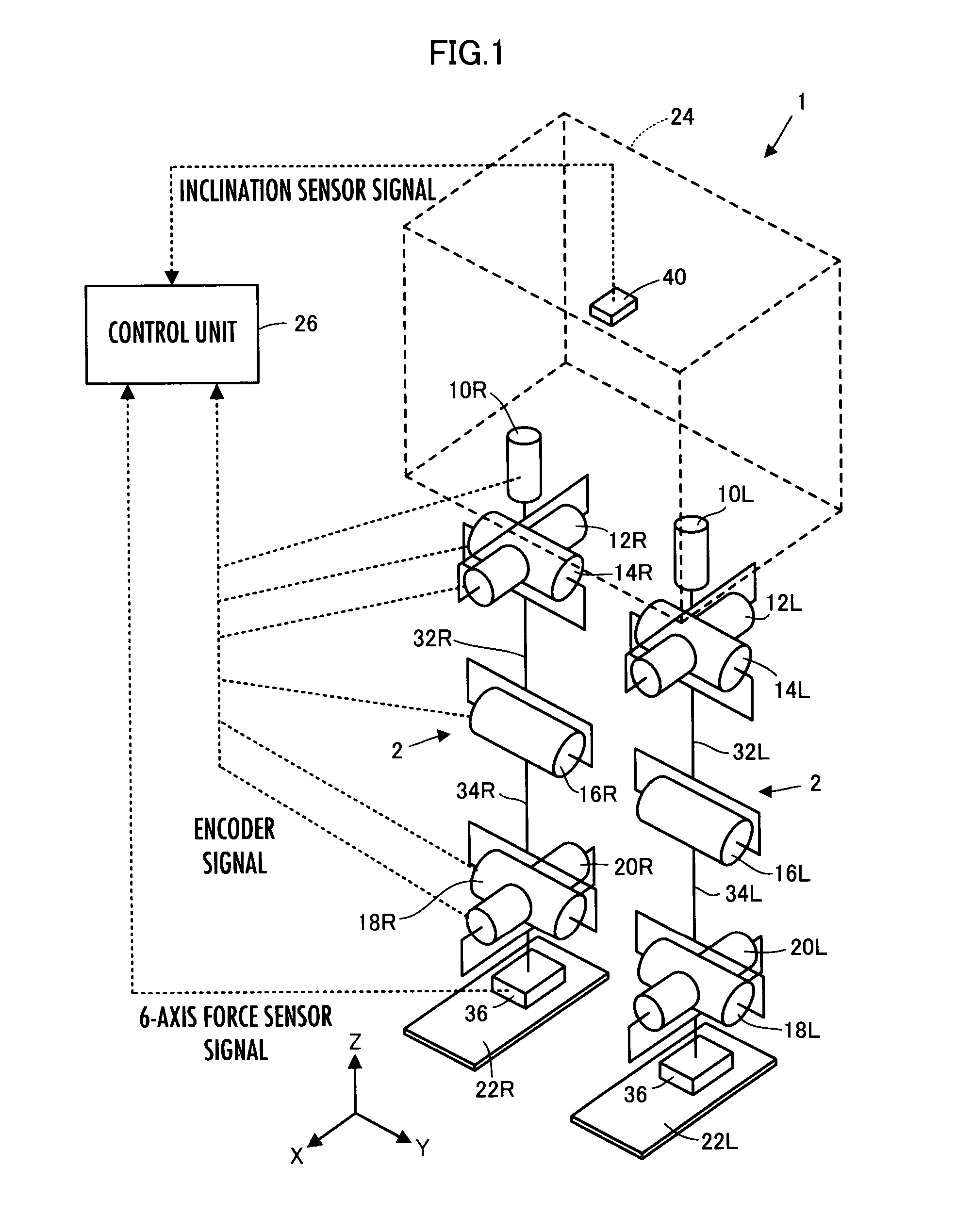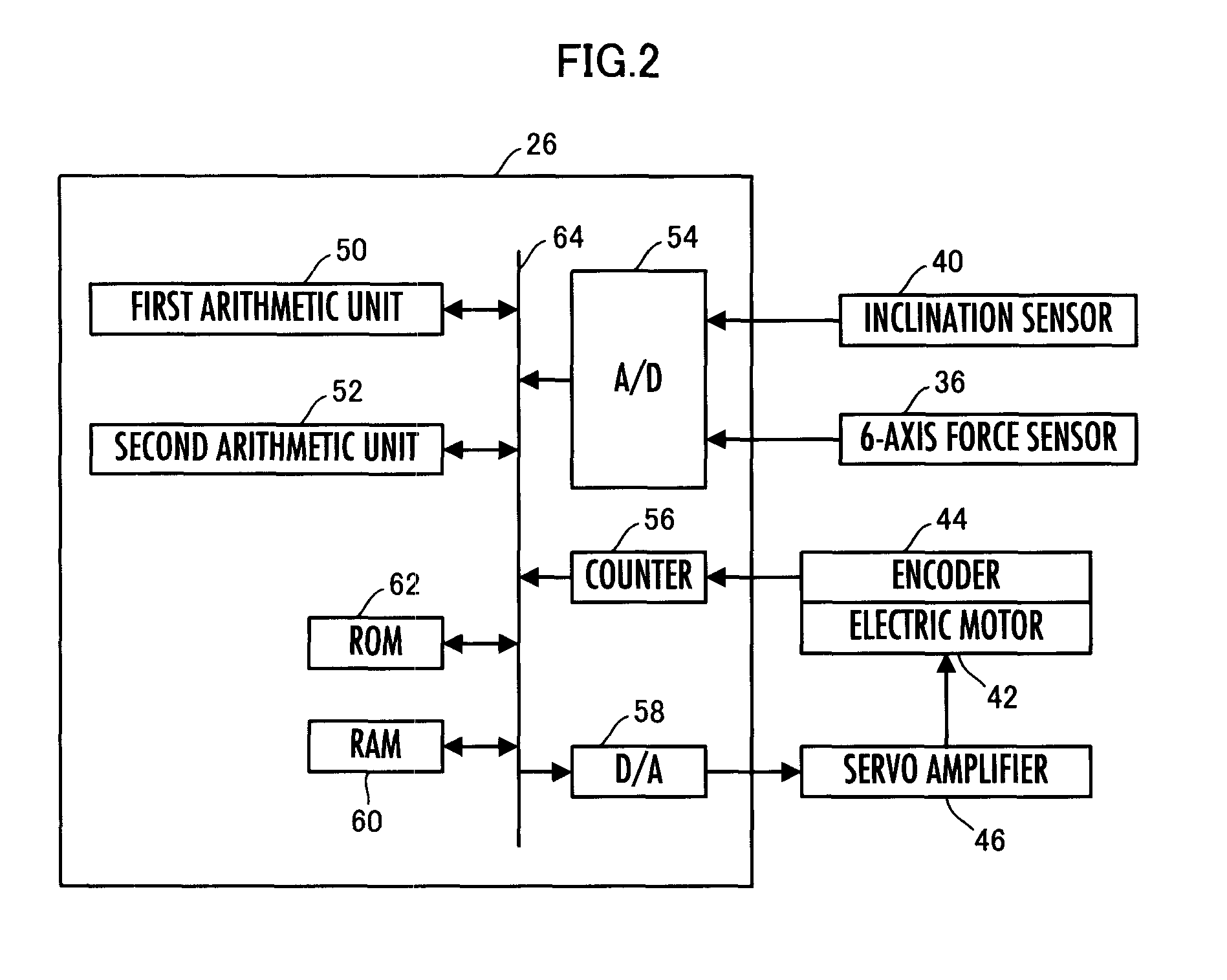Control device for mobile body
a control device and mobile body technology, applied in the direction of programme control, instruments, optical radiation measurement, etc., can solve the problems of frequently overshooting or undershooting the desired posture of the robot body, and achieve the effect of smooth elimination of the deviation of the actual base body postur
- Summary
- Abstract
- Description
- Claims
- Application Information
AI Technical Summary
Benefits of technology
Problems solved by technology
Method used
Image
Examples
Embodiment Construction
[0089]The following will describe an embodiment of the present invention by taking a bipedal mobile robot as an example of a mobile body.
[0090]As illustrated in FIG. 1, a bipedal mobile robot 1 (hereinafter referred to simply as the robot 1) according to the present embodiment has a body 24 as a base body and a pair of right and left legs (leg links) 2, 2 interposed between the body 24 and a floor as a moving mechanism for moving the body 24 on a floor surface.
[0091]The body 24 is connected to the proximal end portions (upper end portions) of the two legs 2, 2 through the intermediary of a waist joint (hip joint), which will be discussed later, and is supported above the floor surface by one or both of the legs 2, 2 that are in contact with the ground.
[0092]The two legs 2, 2 share the same construction and each thereof has six joints. The six joints are a joint 10R or 10L for turning a waist (hip) (for the rotation in the yaw direction relative to the body 24), a joint 12R or 12L fo...
PUM
 Login to View More
Login to View More Abstract
Description
Claims
Application Information
 Login to View More
Login to View More - R&D
- Intellectual Property
- Life Sciences
- Materials
- Tech Scout
- Unparalleled Data Quality
- Higher Quality Content
- 60% Fewer Hallucinations
Browse by: Latest US Patents, China's latest patents, Technical Efficacy Thesaurus, Application Domain, Technology Topic, Popular Technical Reports.
© 2025 PatSnap. All rights reserved.Legal|Privacy policy|Modern Slavery Act Transparency Statement|Sitemap|About US| Contact US: help@patsnap.com



